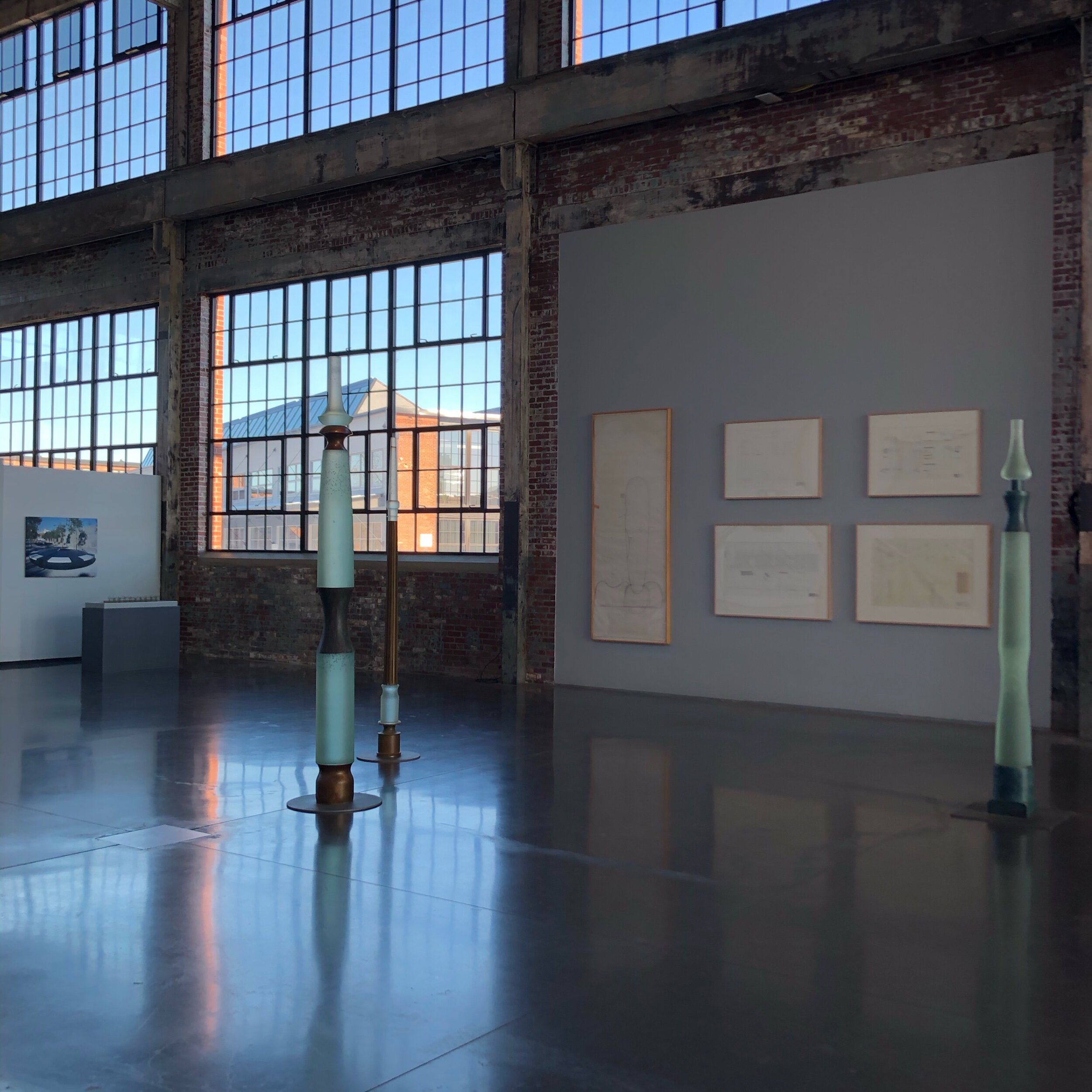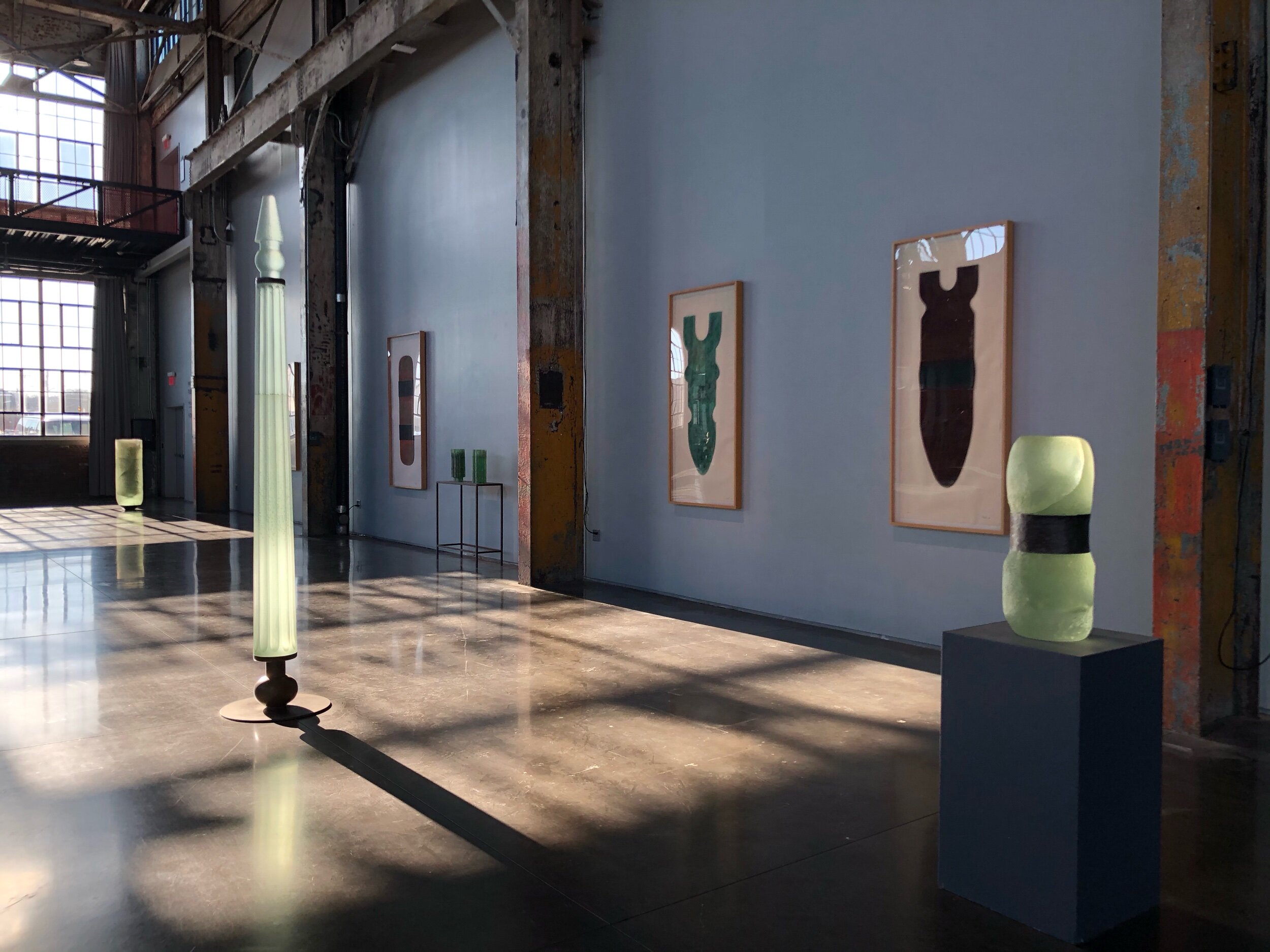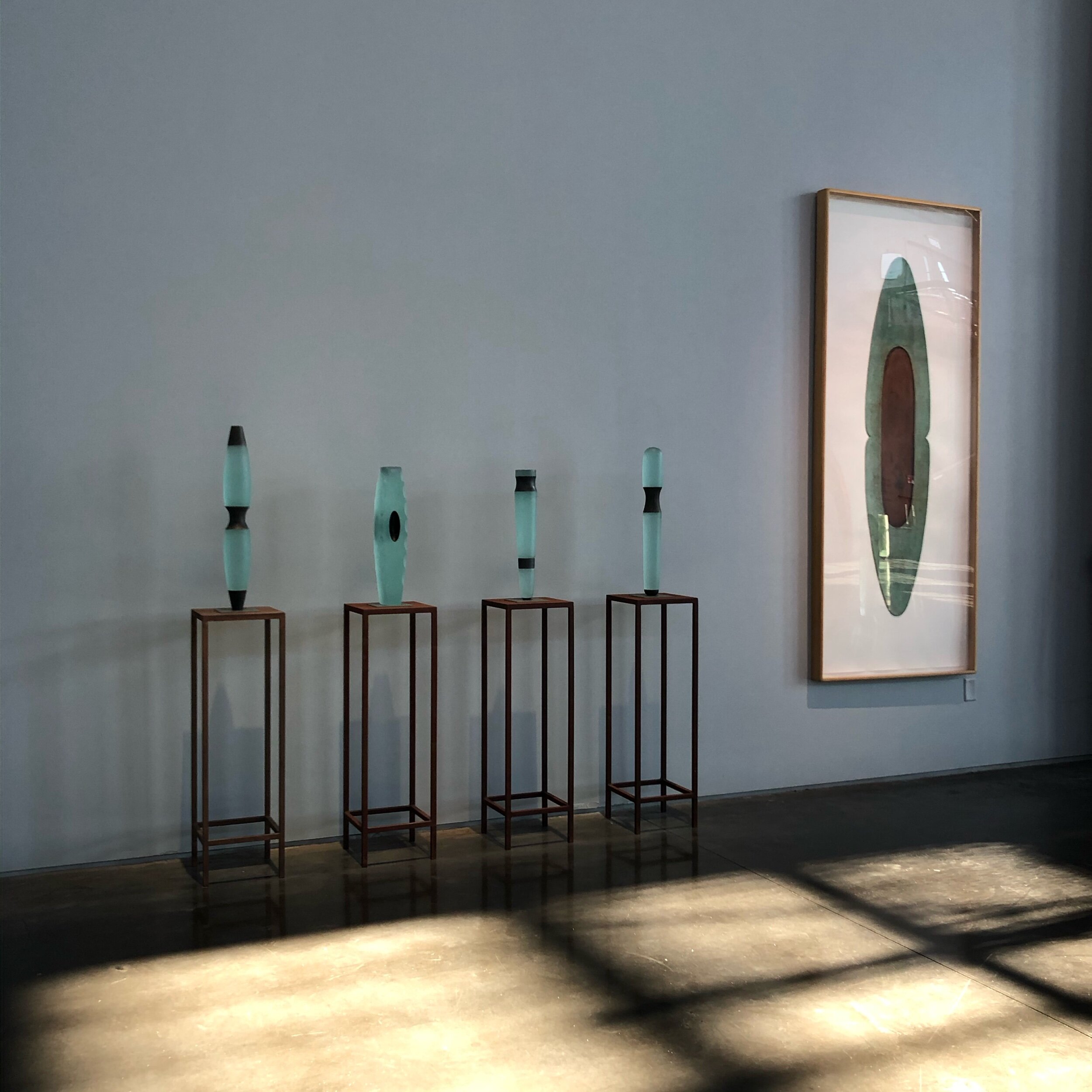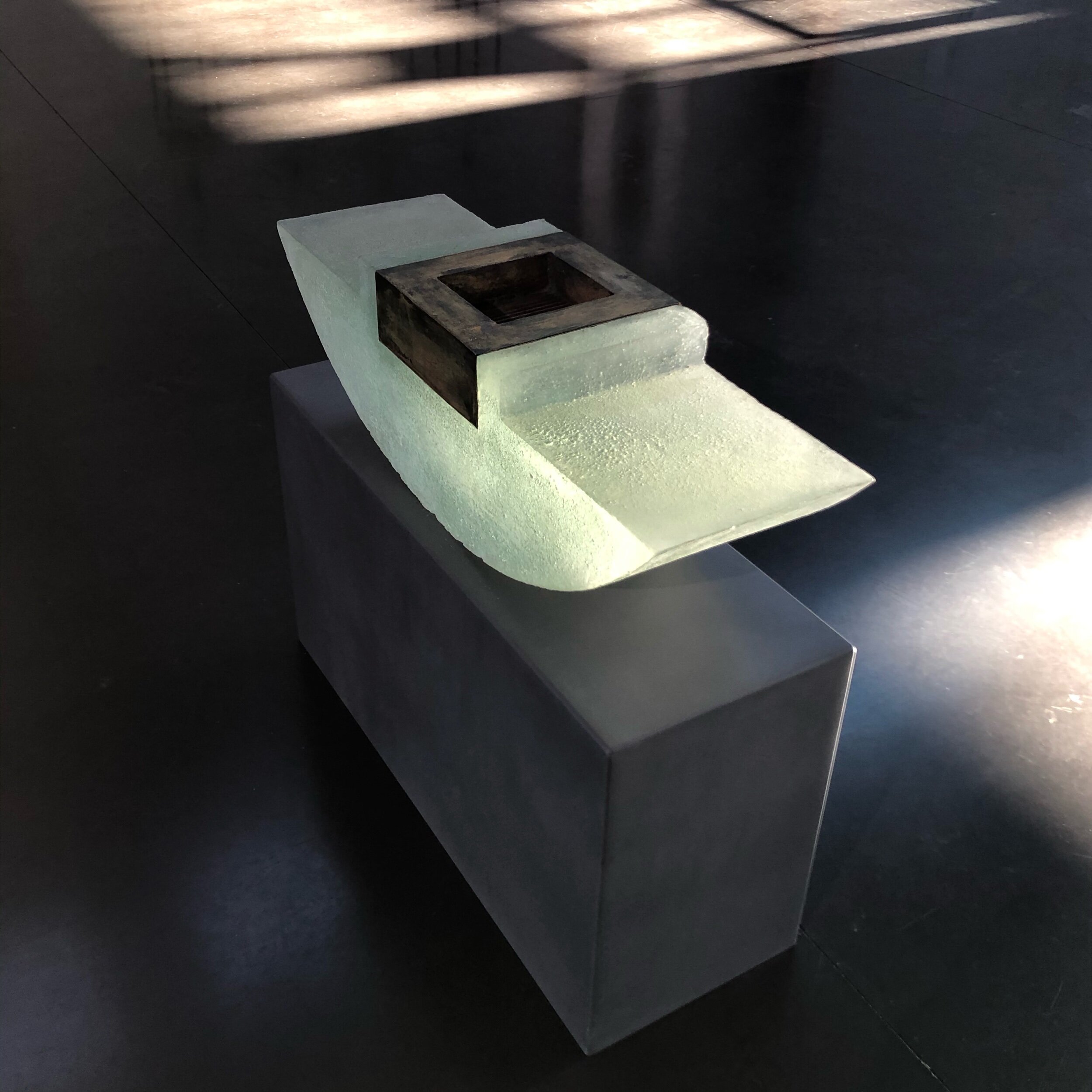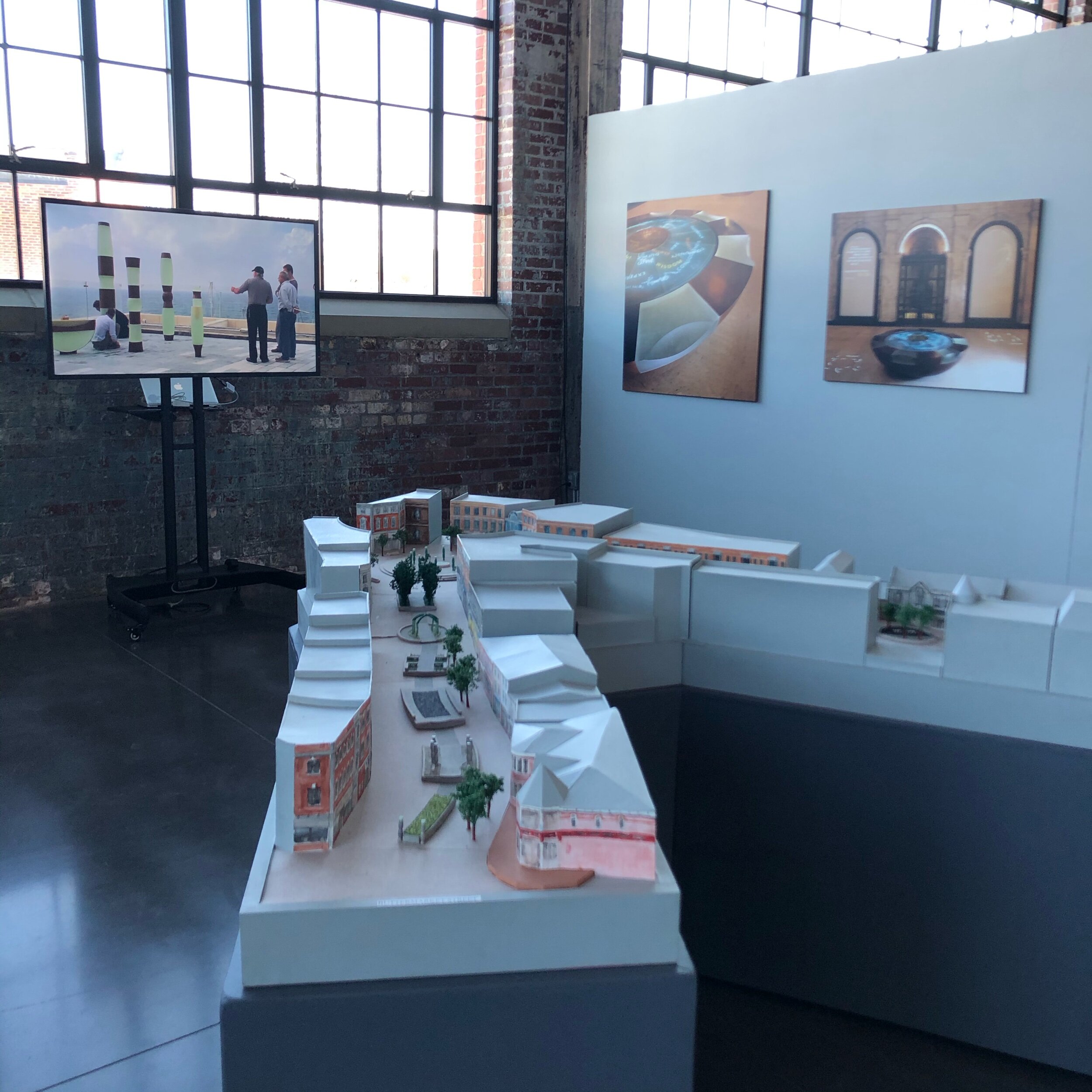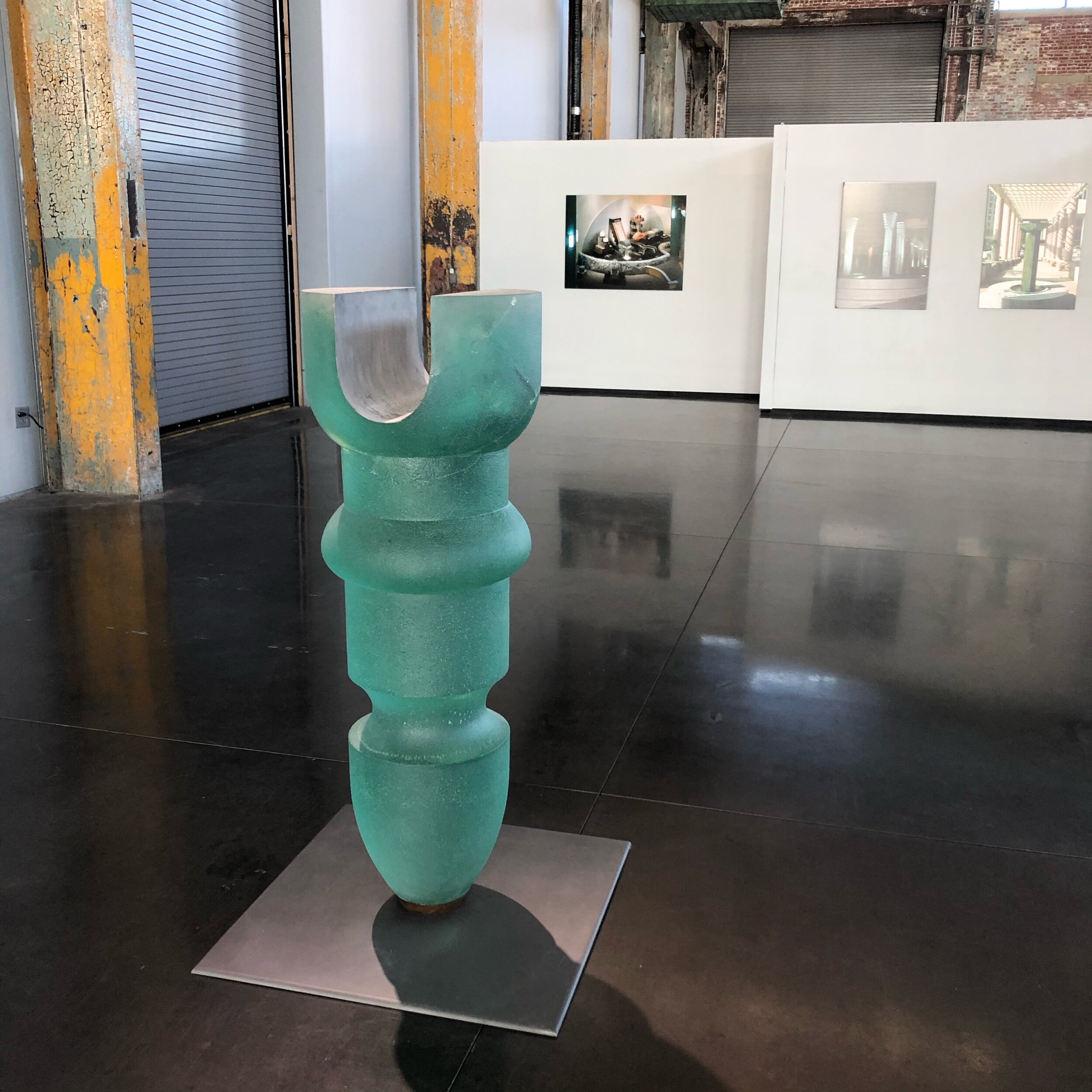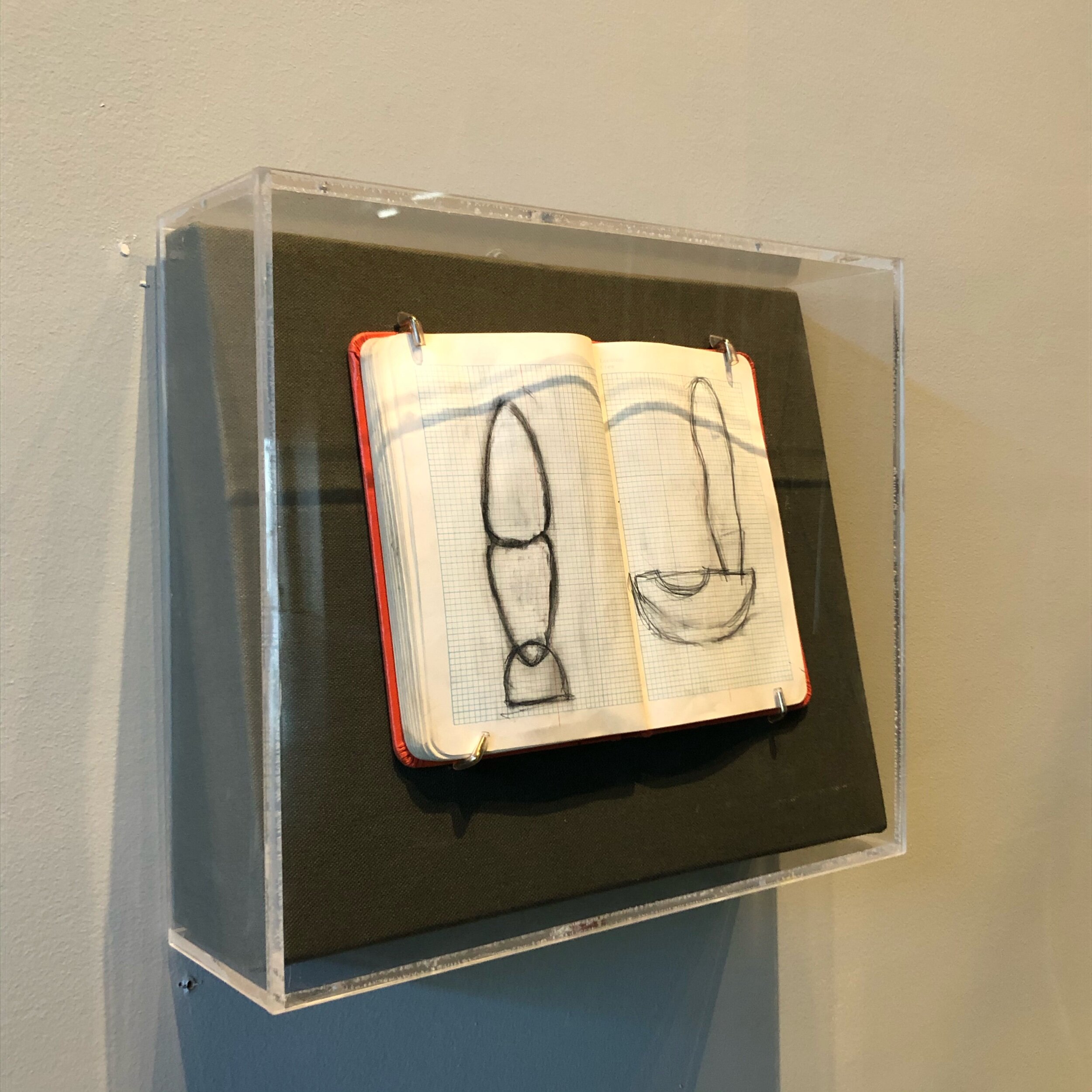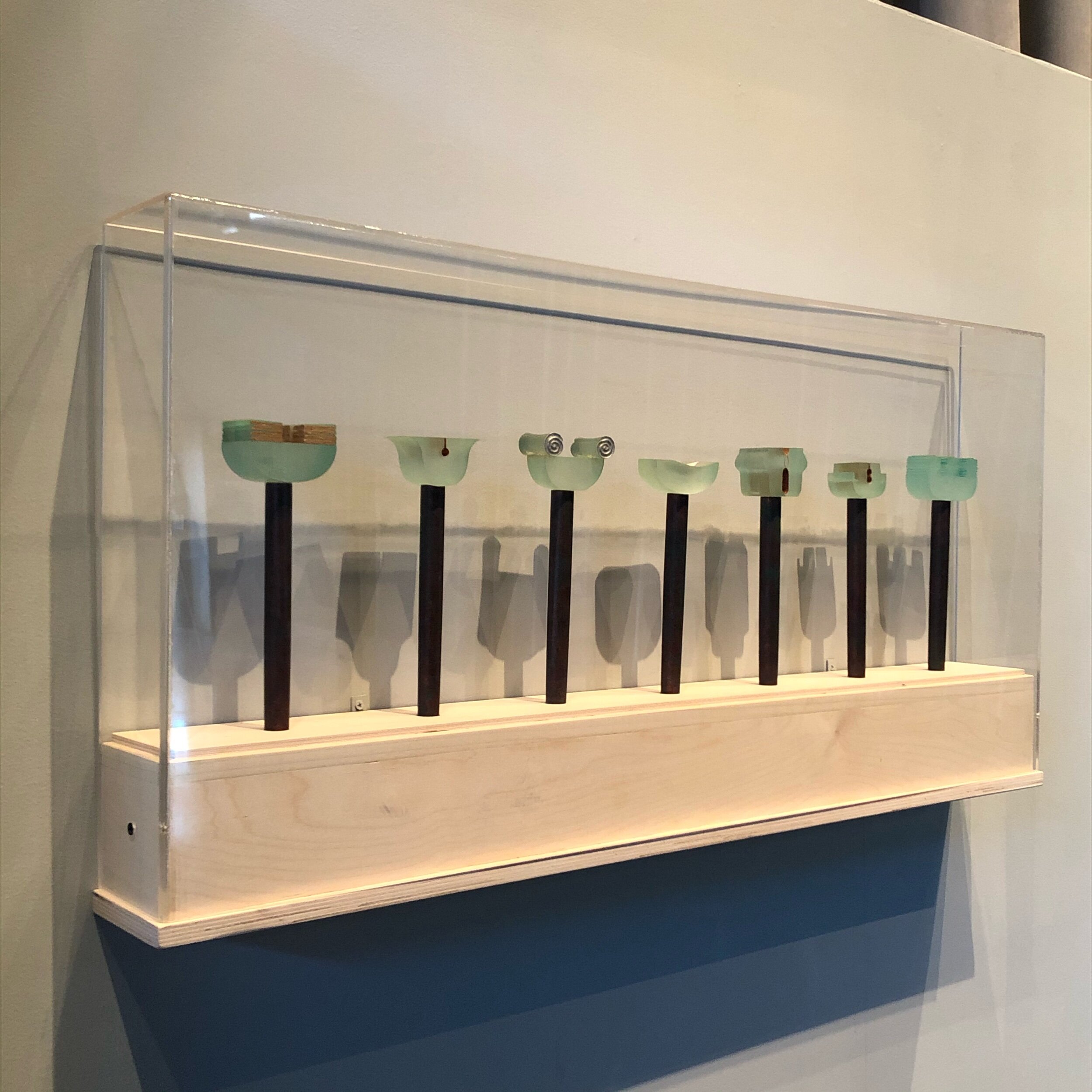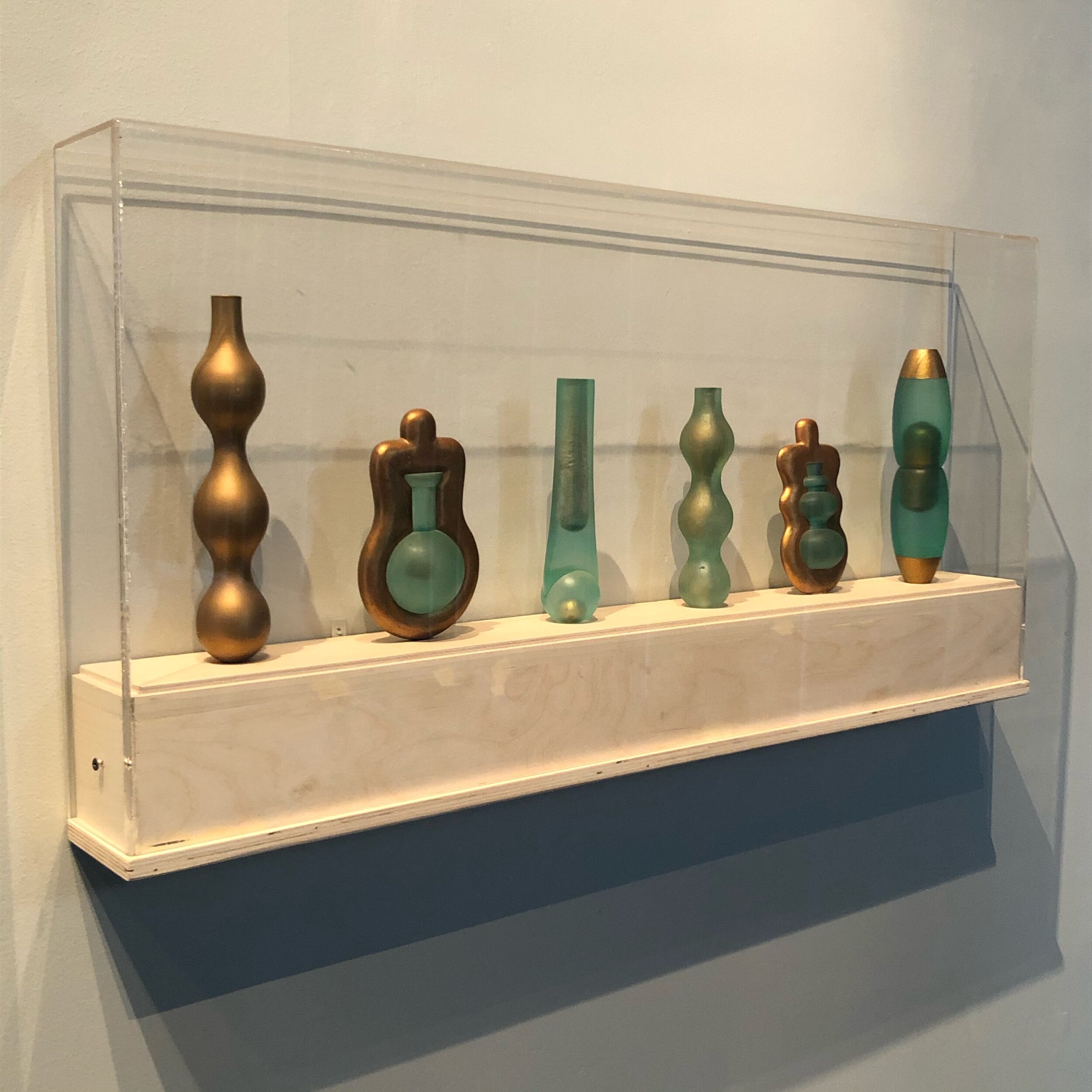If Rhode Island named a Sculptor Laureate, it is almost certain that Howard Ben Tré would have held the mantle. The artist, who passed away in June of 2020 at the age of 71, was one of the most significant contemporary artists to call the state home. Sure, many notables have passed through the doors of institutions like RISD only to disappear into New York or Los Angeles, with their local connections appearing merely as a footnote on their resume. For Ben Tré, however, many of his most productive years were had in the Ocean State and his final studio was housed in a modest industrial building in Pawtucket. On view through March 7, 2021 at The WaterFire Arts Center, an engaging exhibition captures Howard Ben Tré’s important legacy, a fitting tribute to an international artist who made his home in Rhode Island.
Ben Tré was born in Brooklyn and his dedication to the craft of making objects can be traced back to his carpenter father. The artist’s dad studied at Cooper Hewitt before serving in the Second World War, but was denied the dream of being an artist out of a necessity to provide for his family. Ben Tré gained experience in the way many young people do, tinkering in his father’s shop and receiving a first hand apprenticeship in a more or less industrial setting. This dual beginning, which included a dedication to craft and an admiration for industriousness, has been noted as an influence that remained throughout his career. After spending formative years focused on political activism, he earned his undergraduate degree at Portland State University in Oregon before traveling back east with his family to pursue an MFA at RISD under the auspices of Dale Chihuly.
For many graduates, Providence is a way post, but Ben Tré made it his base. The apex of his storied vocation as an artist coincided with the ambitious 1990’s renaissance of Rhode Island’s capitol city, which saw rail lines rerouted and rivers uncovered, transforming a mostly derelict downtown into a markedly more vibrant place. In those days, city leaders threw their lot behind the arts as a key engine driving urban rebirth, with the installation work WaterFire coming to the fore as an essential element of the city’s new identity as a creative hub. For this reason, it seems appropriate that The WaterFire Arts Center is hosting Private Visions, Public Ideals – The Legacy of Howard Ben Tré, a truly stunning exhibition charting the significance of Ben Tré’s output.
Ben Tré’s cast glass forms glow in WaterFire’s bright space.
Rhode Islanders are spoiled to have a number of Ben Tré works accessible in important public places. In 1996, he installed his Bearing Figure at the gateway to the Rhode Island Convention Center, one of the key landmarks in the overhaul of Providence. His BankBoston Plaza design, from 1998, offers a soothing oasis at the city’s densest crossroads. At the RISD Museum, Mantled Figure, completed in 1993, greets visitors who arrive through the Benefit Street entrance. Other projects were sited at Brown University, Wheeler School, and Hasbro Children’s Hospital. In November 2020, the Newport Art Museum unveiled a new installation of Ben Tré’s 2010 sculpture Two Capped as part of their campus renovation project. In short, examples of his work are ample here, but this exhibition puts a fine point on the best characteristics of his production, while helping local viewers to assemble a more cohesive understanding of an artist whose innovative techniques and global reach they may not fully appreciate.
Private Visions, Public Ideals captures the artist’s contributions to the realm of sculpture, to the technique of casting glass, and to the idea of public art itself. Shown off in the cavernous central hall of The WaterFire Arts Center, one will find an array of pieces that exhibit both creative process and artistic product. Maquettes of unrealized projects are paired with models for public plazas that were completed and are still being enjoyed by neighborhoods some twenty years on. Videos give visitors insights into Ben Tré’s background, his technical acumen, and his way of seeing. It is an engaging show, and one that poses a rare and excellent opportunity for guests to view a broad collection of work all in one place. As a bonus, the end of the exhibition space hosts an imposing array of monolithic moving crates, testifying to the complex art-handling necessary for works like these. This is an aspect of the art trade few gallery goers get to see, but one that is the specialty of the late artist’s wife, Wendy MacGaw, who worked with WaterFire staff to organize the exhibition alongside longtime Ben Tré patron Dr. Joseph Chazan.
A collection of Ben Tré shipping crates shows off hidden aspects of art exhibition preparation.
Ben Tré had a magpie-like ability to collect ideas from wide-ranging sources, from the ancient world to contemporary spirituality. The creative innovations he found in glass casting made his ideas, which occasionally verged on the utopic, a reality for all to enjoy. Part figurative, part totemic, and seemingly able to speak across time, his forms are minimal and essential, but also thrillingly alive. Repeating patterns can occasionally be found but perhaps the most direct is that of the glass form seemingly belted with metal, creating cinctures that underscore their medium-bending enormity and curvaceousness. Other exquisite details include bubbles frozen in the interior of the solid glass, cracks and striations that enliven their surfaces, and the incandescent quality they acquire in the bright sunlight. They reward close looking. And in the magnificent space of The WaterFire Arts Center, the next best thing to being outside, Ben Tré’s sculptures sing.
There is a sensuous quality to the works on display, something that invites the viewer to engage with them. It takes restraint to not run a hand along their cool surfaces. While Ben Tré’s work has a timeless beauty, it is also couched in the buoyant Postmodernism of the 1980’s and 90’s, one that imagined a kind of public art that could be transformational for the good. In his commissions for public spaces, the artist sought to make this dream a reality. One section of the exhibition is dedicated to the conceptualization and unveiling of BankBoston Plaza in downtown Providence, a case study in how the artist labored to improve common areas of city living.
The artist’s model for BankBoston Plaza (1998)
This large-scale installation, completed in 1998, includes, as many of Ben Tré’s projects did, several independent vignettes within a cohesive whole. First, a tall urn-like fountain encircled with high-backed benches, then undulating sets of seating that double as planters for a miniature grove of trees, and finally a wall-based installation and water feature. This work activated the urban core and gave a place of respite to the workers toiling in the surrounding high-rises. It brought the quintessential quietness and introspection of Ben Tré’s work to the center of the hustle and bustle. In doing so, it became a stage set against which the drama of urban life could be muted and tamed. After seeing the exhibition on Valley Street, visitors should travel downtown to see this site-specific work in order to feel, first hand, how objects like those on view in a contemporary art exhibition can translate to real life usefulness.
Coming away from Private Visions, Public Ideals, it is difficult not to appreciate the wide-ranging qualities of an artist like Howard Ben Tré. To create the oeuvre attributed to him, he recognized the need to build a team of dedicated collaborators in a variety of fields. He was equal parts creator, innovator, engineer, partner, diplomat, translator, and the list must go on. These are skills that go beyond those of a single-minded artist and towards ones associated with a creative visionary. Through his art he brought together talented craftspeople and industry professionals to make work that often served their counterparts in the more rarified environments of offices, apartments, and cities. Not to mention works that are appreciated in museum collections around the globe. These interconnected linkages between the artist, his extended studio, and the world, are important ones and they are as much on display in this exhibition as Ben Tré’s elegant glass and metal sculptures.
It is indisputable that Howard Ben Tré will be remembered for his remarkable legacy, both in Rhode Island and far beyond its little borders. And in the years to come, this exhibition too will rightly be seen as a key work itself, thoughtfully and beautifully documenting the life and the creations of a uniquely visionary man.
Private Visions, Public Ideals is on view at The WaterFire Arts Center at 475 Valley Street in Providence through March 7. The exhibition is free and open to the public Wednesday - Sunday 10:00am - 5:00pm. Masks are required and guest temperatures are taken upon arrival. To learn more and plan your visit, go to www.waterfire.org.
Below, view a slideshow of scenes from the exhibition.
